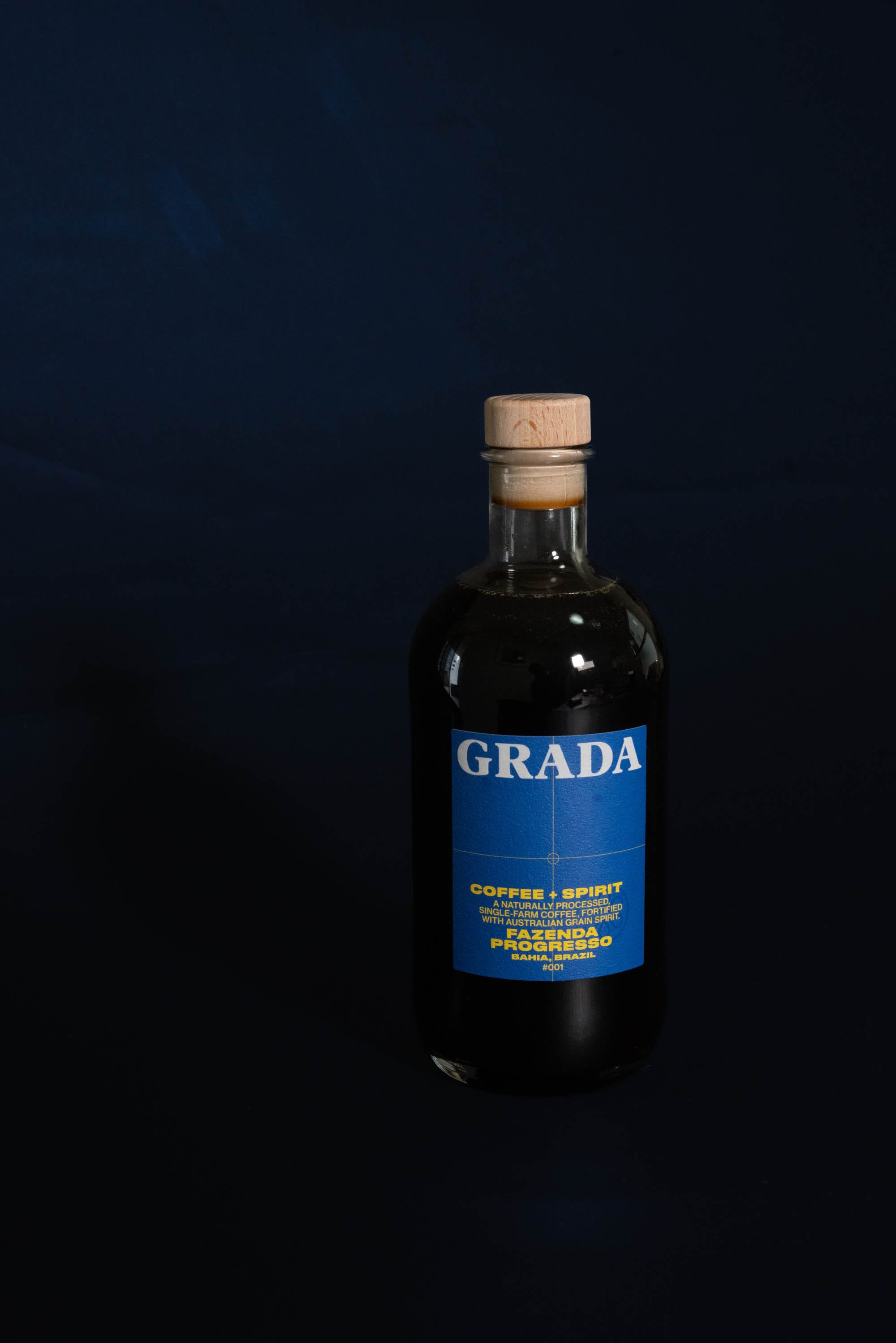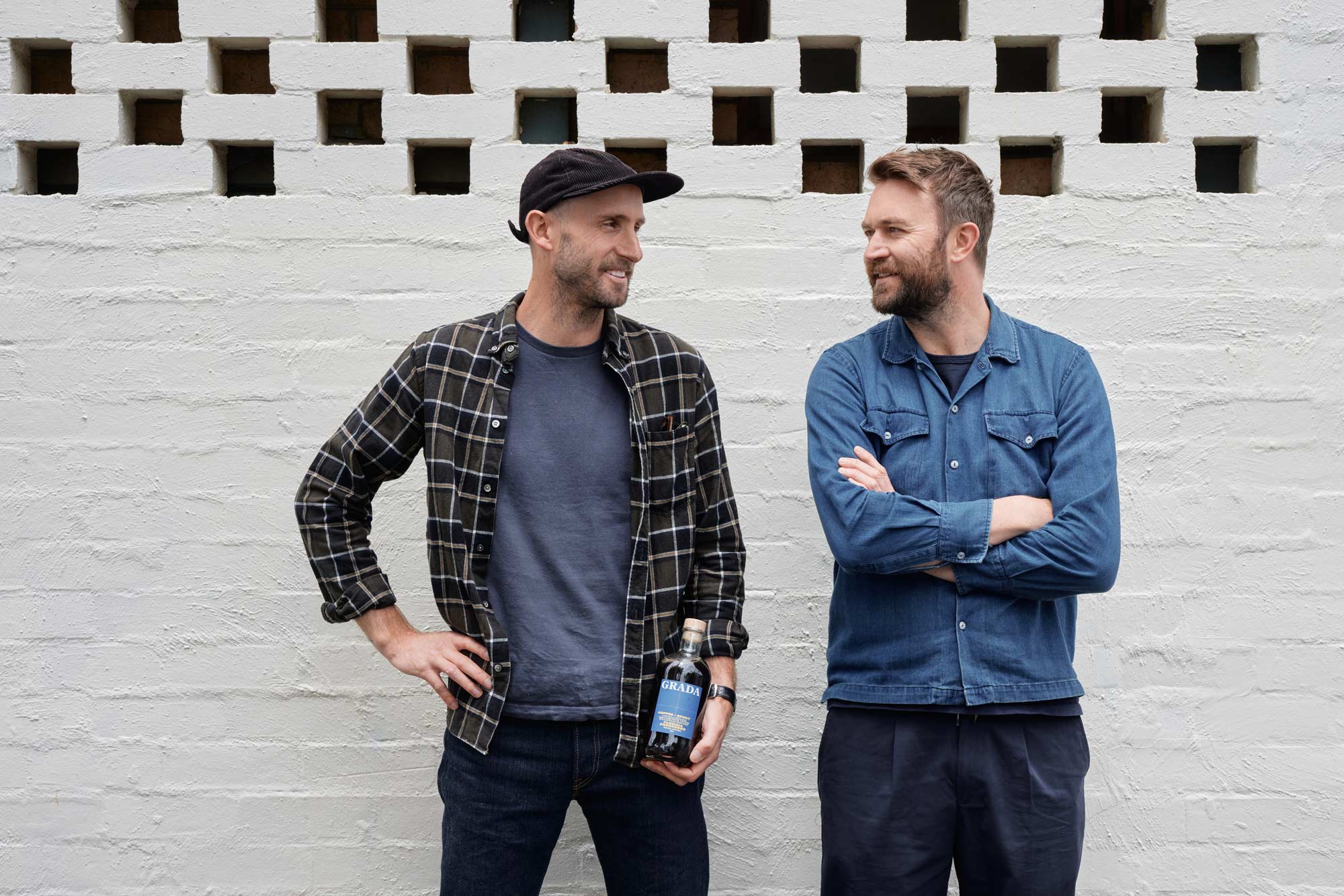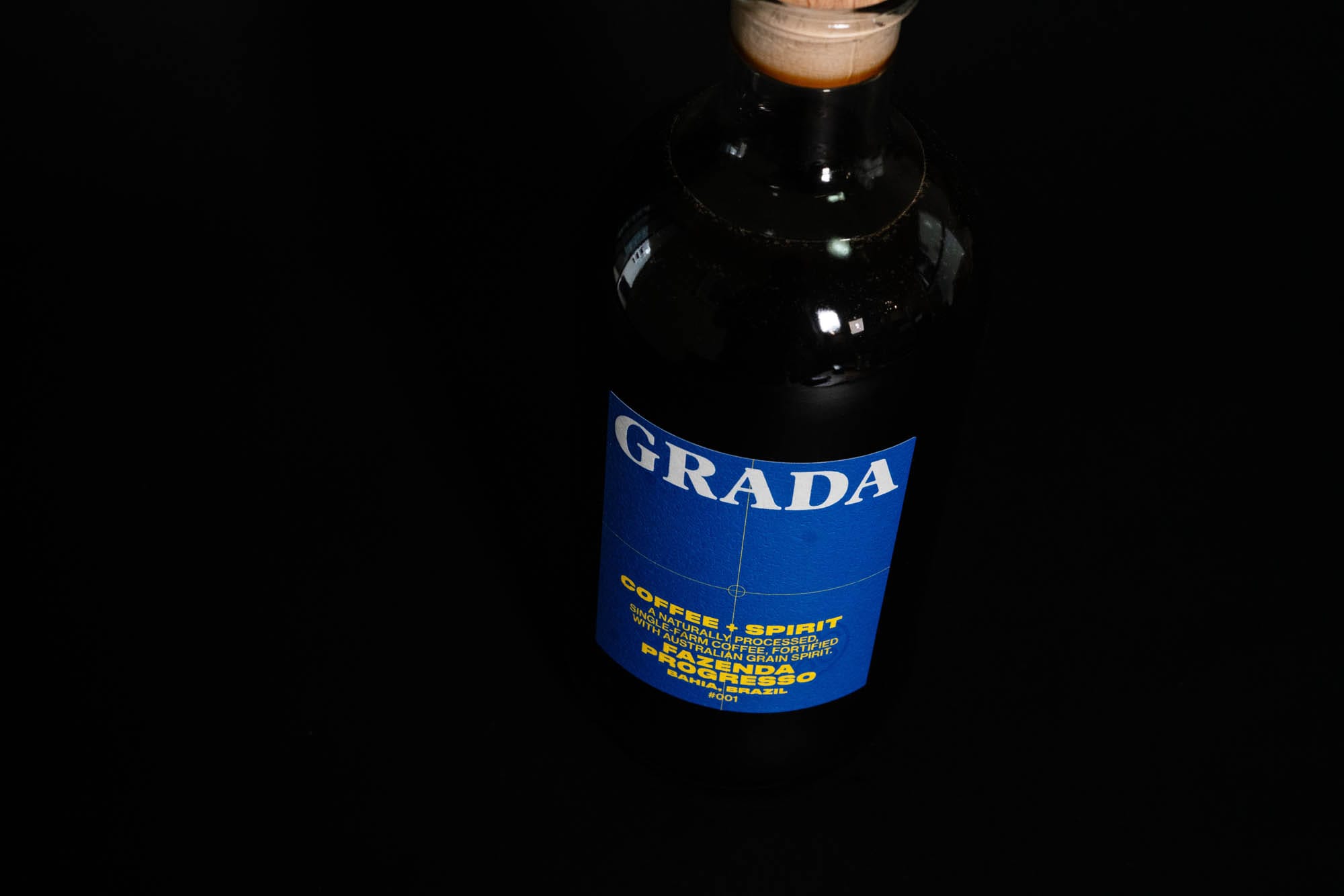Product dive: how Tim Varney & Darren Leaney created Grada Coffee + Spirit
Grada is a new, artisanal coffee spirit from some special bartending and coffee talent.

Whoever the famous model was who asked Dick Bradsell to make them a drink that both woke them up, and f*cked them up, we’ll likely never know (Bradsell is said to have never told).
Whoever it was, whenever it actually was — whether it’s actually true — doesn’t matter; it’s the greatest anecdote behind a drink that there is. I mean, how many times have you read it? How many times has a bartender told you about it?
But I’d also wager that the Espresso Martini — and that story — is a big part of why we’ve got such interest in coffee cocktails today. It’s a flavour we love, and present in some of the country’s best cocktails: coffee featured in eight of the Top 50 Boothby Drinks of the Year in 2022, and in five of the drinks on the 2023 list (though if we were to take the total number of cocktails sold across Australia, I’d wager the Espresso Martini would be up there fighting it out with the Margarita). And in 2023, the Espresso Martini clocked in at number four on Drinks International’s list of the most popular cocktails at the best bars around the world.
With that rising interest in all things coffee and cocktails has come an increase in the quality of coffee products, like last year's release of Grada Coffee + Spirit from the folks at Worksmith in Melbourne.
It’s tasty stuff — Grada was one of the sponsors of the Boothby Best Bars Awards in Victoria last year, and we drank some good drinks made with it courtesy of the Caretaker’s Cottage crew.
So below, I ask co-creator Tim Varney to tell us more about how this truly artisanal coffee spirit is made.

Sam Bygrave: How long did it take to develop Grada?
Tim Varney: Quite some time. Probably 18-plus months.
Initially we were tasked with creating a bottled/batched Espresso Martini, and in doing so we recognised that the liquid we’d created, although not yet quite a finished product, deserved more than being relegated to the humble Espresso Martini – the potential application in drinks requiring a coffee liqueur was where we thought Grada could be. So we got cracking on refining the liquid – and were met with hurdles galore!
The hot extraction technique is proprietary, but what can you tell us about it?
Hot extracting coffee in itself isn’t exactly proprietary, that’s for sure, however how to brew was one of the longest R&D elements. Cold brewing is easier, and due to its marketable application, others tend to use it. But, for us, the cold brew profile ain’t it. It’s all the elements, like recipe, roast profile and coffee selection that make Grada proprietary, and therefore unique.
Coffee extraction is a tricky beast, and we kinda had to wrap the extraction around our starting point — the ABV of the liquid. With that as our constant, we went about refining the extraction itself and slowly understanding what was going to, first, highlight the coffee’s inherent character and second, perform well straight and as a component in drinks.
Then there’s filtration. Darren and I could write a clumsy, complicated thesis on how much of a monumental challenge filtration of large volumes of coffee is, but that would be telling.
What’s the level of sugar in Grada?
200g per litre. Balanced, neutral. It’s also only one of three ingredients in Grada: coffee, neutral grain spirit and sugar. Sugar is obviously vital for a liqueur, and used right with coffee it can beautifully amplify the natural characters within. Turning the sugar up to 11 though, can blow your amp.

What can you tell us about the coffee you use, how it’s roasted, etc.?
We can’t really stress how under-appreciated coffee seems to be in the bar world. It’s why coffee people typically loathe Espresso Martinis. We’re all about celebrating the coffee featured in Grada, and for our first release, we selected a coffee that you could argue is a great middle ground from a flavour perspective. Inherent in Fazenda Progresso’s pulped natural are recognisable qualities – chocolate, brown sugar, nuttiness, bolstered by dried fruit resulting in a complex liquid featuring rum and Madeira like qualities, butterscotch and chocolate.
Fazenda Progresso is a farm nestled in the Chapada Diamantina mountain range, in the heart of Bahia [in Brazil}. The farm sits on a plateau at 1,150 metres above sea level surrounded by the Chapada Diamantina National Park. This high elevation plays a key role in the quality of the coffees produced here, as does the region’s climate. Hot days and cool nights, with an average temperature variation of just 10°C, create the ideal conditions for slow coffee cherry maturation and the gradual development of natural sugars in the fruit, resulting in a sweet and complex cup.
Behind Fazenda Progresso is the Borré family, who combine progressive (hence, Progresso) farming techniques using state-of-the-art infrastructure and agricultural practices, ensuring they can produce the very highest quality coffee possible.
Roast-wise, we’re developing the coffee to best suit our brewing method. Capturing the essence of the coffee itself, without introducing secondary flavours like roastiness – much like the careful use of oak in wine.
Coffee is an agricultural product, so how do you ensure the consistency of Grada from batch to batch?
This is an excellent question, and has been something we’ve grappled with. We’re not here to swim against the current. We’re not a Champagne house, blending vintages to create a house-style. We’re rolling with the natural characters of the coffee — year to year, harvest to harvest.
Plus, we’re not going to be working with a single producer, a single variety, a single processing method that we roll out year in year out, we’re going to explore and celebrate other regions, producers, varieties, processing methods in upcoming Grada releases.
That said, we’re dedicated to developing a relationship with Silvio and Fabiano at Fazenda Progresso, and with that relationship and trust building, we’ll work together to refine the coffee that’s used in Grada Coffee + Spirit #001.
Who are the people making Grada on a day to day basis? Is [co-creator] Darren Leaney still involved?
Darren is very much still involved — he and I work very closely, and together are bringing our unique skill sets to make Grada what it is. We’re firmly dedicated to the product development side of things. I’m the coffee bit, Darren’s the spirit bit.
Darren will continue to focus on R&D, and will play a major role in shaping our consumer and industry events. There are four events in the pipeline for Grada in the coming months, happening in Melbourne and Sydney. The most notable being an event featuring Silvio and Fabiano of Fazenda Progresso, co-hosted with Melbourne Coffee Merchants, who are coming all the way from Brazil to Australia.
Crucially though, the rest of the Grada team are essential voices and bring their own experience and skills in bringing Grada to life.
What does Grada cost wholesale? RRP?
Wholesale: $41. RRP: $55.
What’s the go with the Instagram? Can you tell us about the strategy behind the imagery? Is it AI generated?
They are indeed a mix of artificially generated images, interspaced by very real images of Grada. The copy, however, combines my whack imagination to bring the images to life, and then Jane Ryan, who is more grounded and probably a way better storyteller, brings the Grada brand back to Earth.
Instagram can be a little tiresome, so using it as a true creative outlet has been fun — probably not particularly helpful for the brand, which is why we’re mixing the fake world of the AI-generated images to punctuate the very real and authentic approach we’re taking with Grada. The refined images of Darren’s brilliant drinks — bringing to life the versatility of Grada – will no doubt take over. Plus, we’re going to want to pay tribute to the talented people using Grada in their own venues.
AI-generated images are going to get better faster than we can keep up, and I’m sure there will be a time when an AI-generated image of a cocktail atop a beautiful bar will be indistinguishable from a very real photograph. Until then, we’re chuckling at the discombobulated faces and hands of the AI image.
Tasting notes
What they say: Sweet and creamy, with caramel sweetness balanced by black tea on the finish. Caramelised orange, red apple and hazelnut.
What we say: It’s interesting enough a flavour profile to drink on its own, though you’re going to want some ice — after all, who’s drinking room temperature coffee?
Further reading: A writerly, jittery timeline of coffee and booze
1938 (or was it 1942?): The Irish Coffee is invented, by chef Joe Sheridan at the flying boat terminal in Foynes, Limerick, in Ireland, as a way to keep freezing travellers warm. “Surely we must invent a stirrup cup for the poor souls,” Sheridan is quoted as saying, “and them not able to put their shivering hands in their pockets to pay a shilling unless we warm them.”
January, 2015: Fred Siggins (now co-owner of Melbourne neighbourhood whiskey bar, Goodwater) writes about how the drink became an “Australian obsession” on US-based website, Punch. “The longevity—and sheer popularity—of the drink in Australia is matched only by our obsession with good coffee. In fact, it’s the café culture cultivated by the latter that not only served as the blueprint for the Australian craft cocktail bar, but made the marriage of booze and espresso a matter of fate.”
August, 2019: By now, the Espresso Martini had begun surging in popularity back in its birthplace, London, writes Jane Ryan — who, perhaps not coincidently, now works for Worksmith, the company which has brought Grada to life. In this piece in CLASS, Jane talks about the drink’s early origins, and how it returned home to get some modern updates. “Understanding the allure and enduring popularity of the Espresso Martini really boils down to one question – when do people order one? It’s rarely premeditated. This is the crisp- packet impulse buy of the drinks world.” Yes, guilty as charged.


